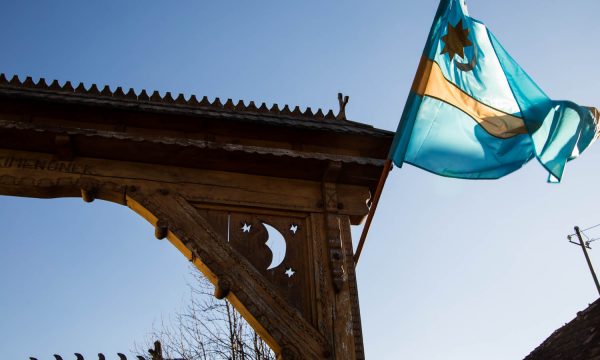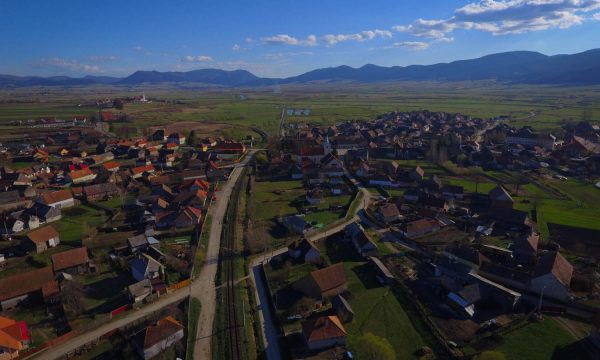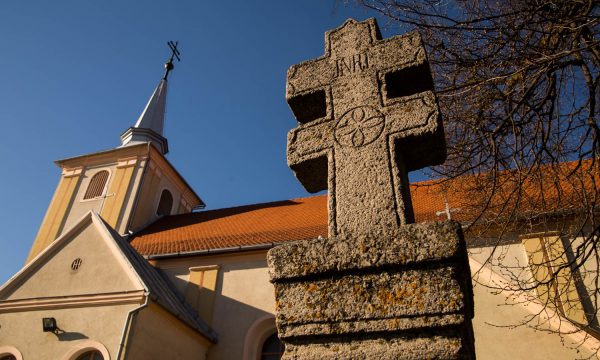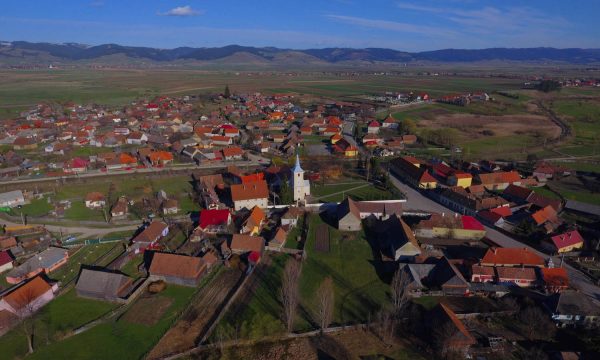Legend
The knightly King Saint Ladislaus, the protector of Hungarian Christianity and the forger of national cohesion, is widely revered by the Roman Catholic community of Sânsimion. The cult of the knightly king is not only connected to a local commemoration organised one day each year (27th of June), i.e. the pilgrimage on Saint Ladislaus’ feast day, but it is also one of the cornerstones of organising everyday life. The reason for this is, on the one hand, related to church history and is, on the other, tied to local legends and beliefs.

According to historical sources, in the early period of church organisation, Sânsimion and Cetăţuia (Hu: Csatószeg) formed a single parish, having a common church and cemetery. The church of Sânsimion was completed in 1835, being consecrated to King Saint Ladislaus, supposedly to perpetuate the name of a former nearby chapel. Its old altar is now found in one of the oldest churches in the Lower Ciuc (Hu: Alcsík) Region, in the church of Cetăţuia, which is listed as a historical monument. In the period preceding the 1848 Hungarian Revolution and War of Independence, the figure of King Saint Ladislaus, who consolidated the Hungarian kingdom, was still living in the memory of the Szeklers, thus the locals honoured him for his knightly valour and prayed for his divine patronage. One of the famous natives of the village is the hero of the 1848–49 Hungarian Revolution and War of Independence, Major József Endes, the predecessor of Miklós Endes.

Nowadays, the village church, the altar of which is adorned with the precious statues of Saint Stephen, founder of the kingdom, and of Saint Ladislaus, is a sacred space preserving the name and memory of the legendary hero, as well as the focal point of religious life. After the fall of communism in 1989, the ancient cult of King Saint Ladislaus became associated with the three-day-long village days organised yearly in June, namely the Saint Ladislaus Days, which, beside the traditional church ceremonies associated with the pilgrimage, also provide various cultural and sporting events. For the pilgrimage mass, people who had left the village return in large numbers, in the spirit of Christian unity, of kinship, as well as in respect towards their ancestors.
The Saint Ladislaus Square has recently been inaugurated in the centre of the village, where the statue of Saint Ladislaus stands, carved from local stone, expressing the idea of durability. The Saint Ladislaus Square emanates the knight king’s spirit and is also the scene of the most important community events, as it houses various cultural events and national commemorations. The memory of King Saint Ladislaus is further honoured and enriched by the fact that the church choir, which is the oldest cultural association of the community, took the name of the knightly king in 2006.
According to the still living oral tradition, in the area called Golden Field (Hu: Aranyos-puszta), which marks the village’s border towards the neighbouring Sântimbru (Hu: Csíkszentimre), the footprint of Saint Ladislaus can be seen on the surface of a stone. The motif of water bursting from the ground at the touch of the king’s foot is well-known in Hungarian legends and stories, and the Golden (Hu: Aranyos) Stream flows here. Another local legend talks about the trace left by the horseshoe of Saint Ladislaus’ horse and about the Saint Ladislaus Spring named after him, which is not far from Green Fields (Hu: Zöldestetői puszta).

Natural Heritage
One of Sânsimion’s northern neighbours is Sâncrăieni (Hu: Csíkszentkirály), a village only 10 km away from the Luci (Hu: Lucs) bog. This bog is one of the greatest natural treasures of the Transylvanian region, and it is located in a large volcanic crater in the northern part of the South Harghita Mountains, at 1079 m altitude. It might have been a crater lake originally, gradually transformed into a peatland and most of its water drained by the river Cormoș, in the south-western corner of the area. The river got its name from its dark, brownish colour (in Hungarian, Kormos means sooty), caused by the humic acids dissolved from the peat. The bog and the surrounding mountainsides, a territory of some 273 ha, were declared a nature reserve in 1955. Since 2007, the territory has been part of the Tinovul Luci Natura 2000 site (ROSCI0246). Because of the low oxygen level in the bog’s water, organic matter doesn’t decompose completely and thus does not return into the material cycles. Due to this process, the bog has very nutrient-poor soils, and the species living here had to adapt to this circumstance. One of these species is the round-leaved sundew (Drosera rotundifolia), which compensates for this condition by trapping and consuming insects. The soils are covered by members of the genus Sphagnum, commonly referred to as peat moss.

One of the reasons that make the Luci bog special is that although the plants found here are common on the northern tundras, they very rare in the temperate regions. The small scots pine (Pinus sylvestris) and the silver birch (Betula pendula) also help make the landscape tundra-like in appearance. But the most noteworthy species of the area is the dwarf birch (Betula nana), since the bog is its most southern habitat in Europe. It is likely to have remained in this cold environment from the last ice age. Sadly, the dwarf birch population is small these days, and it is protected.
Its large size and uniform vegetation make orientation inside the bog hard. Visitors should be careful not to get lost, and hiking without a tour guide is not recommended.
